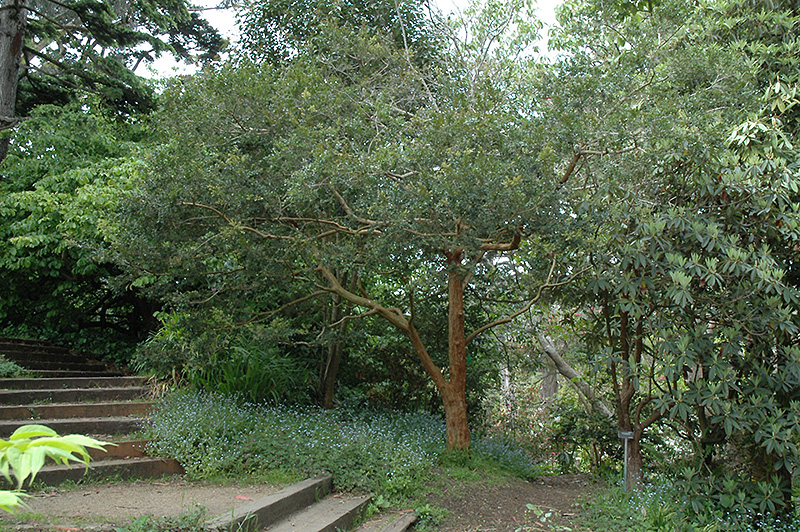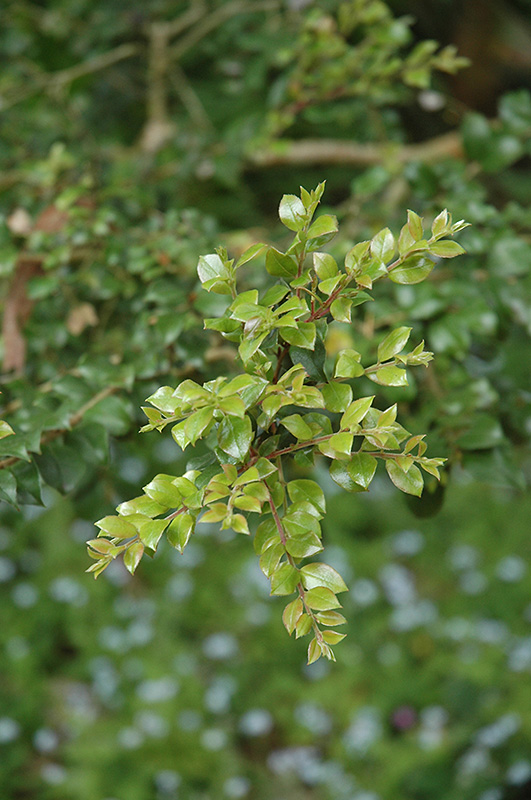Plant Finder
Height: 19 feet
Spread: 10 feet
Sunlight:
![]()
![]()
Hardiness Zone: 7b
Other Names: Chilean Myrtle, Temu, Arrayan, Palo Colorado
Description:
Boasts showy, fragrant white flowers and foliage; keep shrub form to reach the edible, juicy, black berries; prune lower branches to show off the wonderful exfoliating orange bark; has denser growth in full-sun; a large tree in hotter climates
Ornamental Features
Orange-bark Myrtle features showy fragrant white cup-shaped flowers along the branches in mid summer. It features an abundance of magnificent black berries in late fall. It has dark green evergreen foliage. The glossy pointy leaves remain dark green throughout the winter. The peeling orange bark is extremely showy and adds significant winter interest.
Landscape Attributes
Orange-bark Myrtle is a multi-stemmed evergreen shrub with an upright spreading habit of growth. Its average texture blends into the landscape, but can be balanced by one or two finer or coarser trees or shrubs for an effective composition.
This is a relatively low maintenance shrub, and is best pruned in late winter once the threat of extreme cold has passed. Gardeners should be aware of the following characteristic(s) that may warrant special consideration;
- Self-Seeding
Orange-bark Myrtle is recommended for the following landscape applications;
- Accent
- Mass Planting
- Hedges/Screening
- General Garden Use
- Topiary
Planting & Growing
Orange-bark Myrtle will grow to be about 19 feet tall at maturity, with a spread of 10 feet. It has a low canopy, and is suitable for planting under power lines. It grows at a medium rate, and under ideal conditions can be expected to live for 80 years or more.
This shrub does best in full sun to partial shade. It does best in average to evenly moist conditions, but will not tolerate standing water. It is not particular as to soil type or pH. It is somewhat tolerant of urban pollution. This species is not originally from North America.





